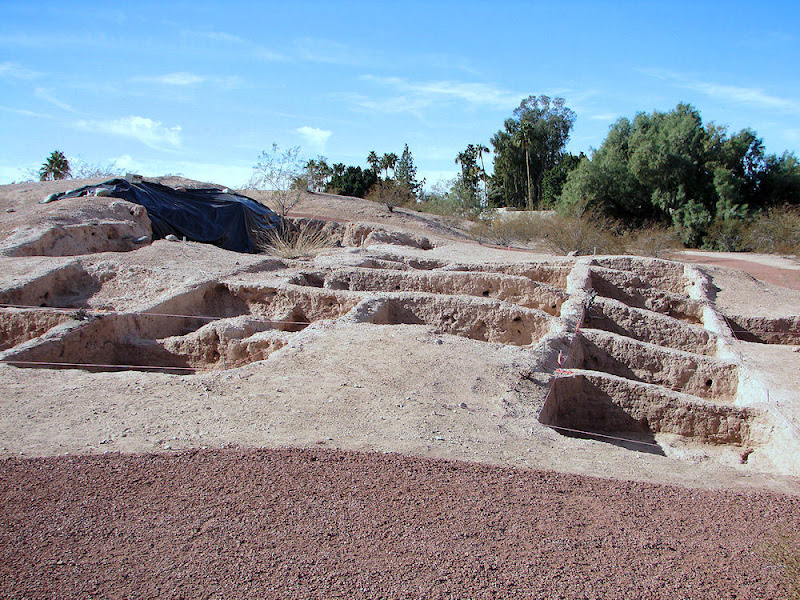Once the center of a thriving, powerful Hohokam village, the Mesa Grande ruins may be available for regular public viewing for the first time this winter when the Arizona Museum of Natural History opens a long-anticipated "welcoming center" at the site.

The site is Mesa's only Arizona Centennial project, and the small center represents the culmination of a 30-year quest by Mesa archaeologist Jerry Howard to preserve the ruins and open them to public access, despite indifference and a chronic lack of funding aggravated by the state budget crisis.
Mesa Grande, near Brown Road and Country Club Drive in the northwestern part of the city, is a large temple mound similar in size and purpose to Phoenix's Pueblo Grande. Archaeologists say it is among Arizona's top prehistoric treasures. Pueblo Grande sat on the north side of the Salt River, while Mesa Grande was on the south side.
The villages were 8 miles apart and were at the head of major irrigation canals that formed the largest system in prehistoric North America, said David R. Abbott, associate professor of anthropology at Arizona State University's School of Human Evolution and Social Change.
"They are very politically powerful and centrally located," he said, because they controlled water for farming that sustained the Hohokam for 1,000 years. "When you think about the Hohokam, you think about irrigation. They did it in a very big way."
He said Mesa Grande and the other two "grandes," Pueblo Grande and Casa Grande, should give Valley residents a sense of place and historical prospective, but they have deeper meaning for Native Americans.
"I think it's very important for Native American communities. It's a place for them to celebrate the accomplishments of their ancestors," Abbott said.
Suzanne Fish, a professor of anthropology at the University of Arizona and a curator at the Arizona State Museum in Tucson, said combining Pueblo Grande and Mesa Grande with exhibits at the Arizona Museum of Natural History should give visitors a better idea of the scope of the Hohokam civilization.
"It's not just one place. There were mounds all over the Phoenix area," which includes the confluence of the Salt and Gila rivers in archaeological terms, she said. "These two were the biggest."
Howard, curator of anthropology at the Arizona Museum of Natural History, said Mesa Grande dates back to A.D. 1100 to 1450.
The platform mound was used for religious purposes but also to administer the canals, deciding who received water and on what schedule.
He said canals found in Tucson are older, dating to 1200 B.C.
The Hohokam evolved from these early forms of agriculture to the canal system in the Valley.
David R. Wilcox, retired curator of the Museum of Northern Arizona and a senior research associate, said the canal system directly led to Mesa's growth, making the Centennial project relevant in more modern times.
"The Mesa Mormons reopened some of the Hohokam canals. They took advantage of that. It's part of the story of Mesa, too," he said.
By visiting Mesa Grande, "you can see the other half of the system. By going to Pueblo Grande and Mesa Grande, you can think about how the whole Valley worked together," Wilcox said.
Tom Wilson, director of Mesa's Arizona Museum of Natural History, said the 1,200-square-foot welcoming center would start small and would be open from 10 a.m. to 3 p.m. on Fridays and Saturdays from Oct. 1-May 15. Wilson said the facility could debut as early as February, pending approval of architectural plans by Mesa's Design Review Board.
The plan represents a scaled-back, low-impact vision for the ruins compared with the 22,000-square-foot museum contemplated in the late 1980s, Wilson said.
The archaeologists praised Howard for his persistence, his ability to explain why the project is important and for involving hundreds of volunteers in his research.
"It creates more interest," Fish said. "If they couldn't do it one way, they did it another."
Author: Jim Walsh | Source: AZ Central [July 04, 2011]